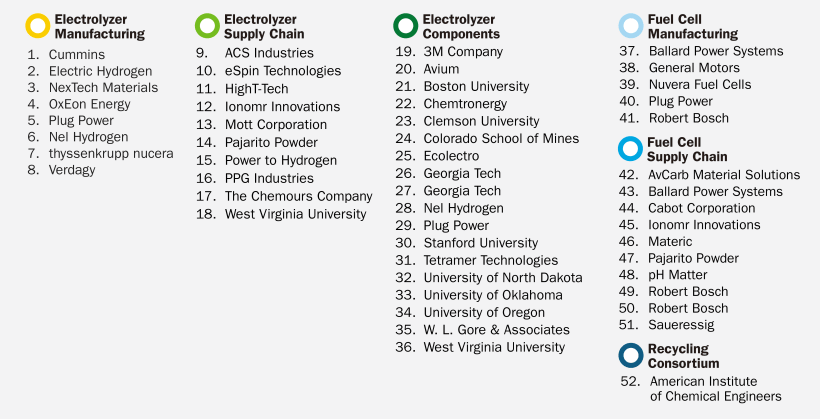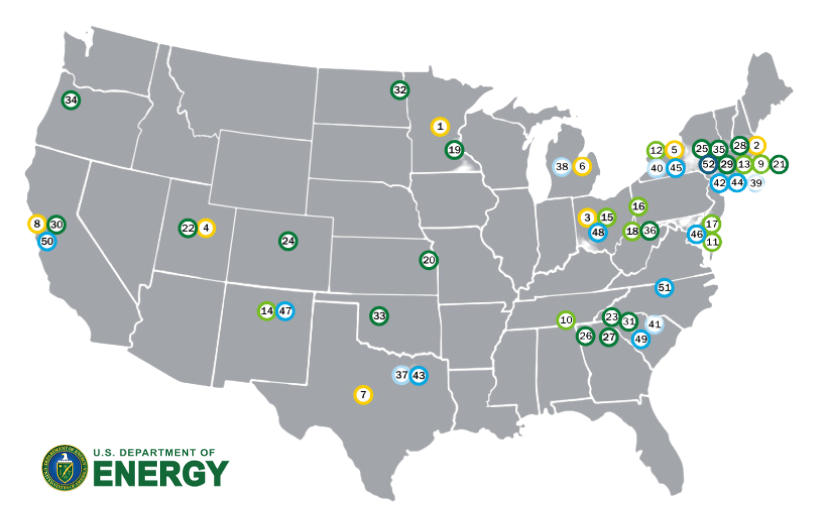
The Department of Energy (DOE) is investing $750 million from the 2021 bipartisan infrastructure law into “clean” hydrogen research and development. This funding will support projects focusing on electrolyzers, which are devices that use electricity to separate hydrogen from water, as well as fuel cells and manufacturing processes.
The DOE’s Hydrogen and Fuel Cell Technologies Office will distribute the funds to 52 different hydrogen projects across six categories. These categories include research to enhance electrolyzer manufacturing, address supply chain needs, reduce costs, support fuel cell manufacturing, and develop recycling methods for materials used in hydrogen production.
Among the recipients are DOE national laboratories and well-known companies such as Cummins, General Motors (GM), and Plug Power. Cummins, for instance, will use its $17.9 million grant to develop a new electrolyzer design to cut manufacturing costs. GM will receive $30 million to boost U.S. fuel cell production.
Overall, 24 states will benefit from DOE funding, with New York receiving the most. This funding aims to achieve ambitious goals, including increasing fuel cell production by 14 gigawatts per year and electrolyzer manufacturing capacity by 10 gigawatts per year. This additional capacity could produce 1.3 million metric tons of clean hydrogen annually.
The DOE also aims to lower the cost of clean hydrogen to $1 per kilogram by 2031.

